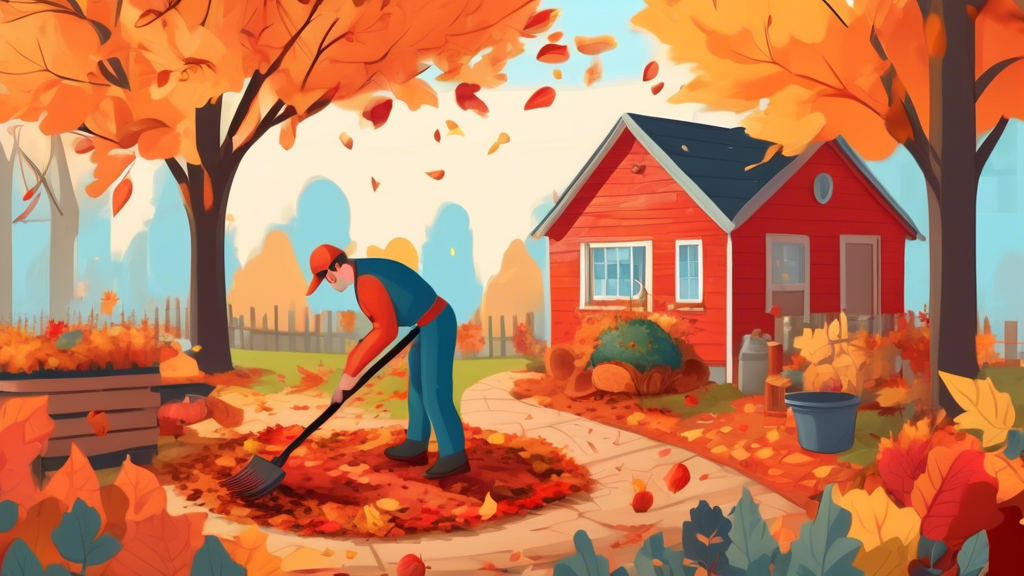Maintaining a garden free from pests throughout the year is crucial for vibrant and healthy plants. Our comprehensive guide will walk you through effective seasonal strategies to combat pests, ensuring your efforts yield fruitful results.
During spring and summer, gardens face heightened threats from various insects. Recognizing early signs of infestation is pivotal. From aphids to beetles, identifying these intruders early allows for prompt intervention. We’ll delve into both natural and chemical solutions to address these challenges efficiently, helping your garden thrive during these critical growing periods.
As the seasons shift to fall and winter, preparing your garden becomes essential. Seasonal clean-up plays a significant role in removing pests aiming to overwinter. Furthermore, focusing on soil health and preparing garden beds can set the foundation for a resilient environment against future infestations.
Our guide covers year-round pest management strategies, blending immediate actions with long-term plans. Stay with us as we explore the best practices for safeguarding your garden, no matter the season.
Spring and Summer Pest Control: Proactive Measures for Peak Growing Seasons
Identifying Common Spring and Summer Pests: Recognizing Early Signs
As the temperatures rise and plants begin to thrive, so do the pests that can pose a threat to your garden. Recognizing the early signs of these nuisances is crucial. Common pests during spring and summer include aphids, caterpillars, and spider mites. Aphids can often be seen on new growth, leaving a sticky residue known as honeydew. Caterpillars chew through leaves, leaving noticeable holes, while spider mites create fine webbing on the undersides of leaves.
To effectively identify these pests, regular monitoring is key. Inspect plants frequently, focusing on new growth and the undersides of leaves. Early detection allows for swift action, helping prevent a minor infestation from escalating into a full-blown problem.
Natural and Chemical Solutions: Effective Treatments for Immediate Action
Once pests are identified, implementing an appropriate treatment plan is essential. For those preferring organic methods, natural solutions can be highly effective. Beneficial insects like ladybugs and lacewings can control aphid populations. Introducing these predators into your garden can significantly reduce pest numbers. In cases of caterpillar infestations, hand-picking them off plants or using Bacillus thuringiensis (Bt), a naturally occurring bacterium, can offer control.
For spider mites, a strong water spray can dislodge them, followed by the application of neem oil or insecticidal soap. These natural treatments manage pest populations without compromising the health of your plants or the environment.
However, there are times when chemical solutions may be necessary. In such cases, using the least toxic option available is recommended. Horticultural oils and insecticidal soaps can target pests effectively with minimal impact on beneficial insects and pollinators. Always follow product labels and use sparingly to avoid potential harm.
Combining natural and chemical treatments can create a comprehensive approach. Natural solutions provide initial control, while selective chemical treatments can address persistent problems. This integrated pest management strategy keeps your garden flourishing throughout peak growing seasons.

Fall and Winter Pest Prevention: Preparing Your Garden for Dormant Seasons
Seasonal Clean-Up: Techniques to Eliminate Overwintering Pests
As cooler months approach, thorough maintenance becomes crucial to ward off pests that seek refuge during the dormant period. Regularly removing plant debris, fallen leaves, and dead plants is essential. These materials provide shelter and breeding grounds for many insects. Use garden rakes to gather and dispose of organic litter, which helps minimize habitats conducive to pests. Turning over the soil effectively exposes hidden insects to the elements, reducing their survival rates.
Pruning dead or diseased branches will prevent pests from finding safe harbors in the garden. Dispose of pruned material properly, either through composting or municipal yard waste programs. Pay special attention to trees and shrubs; these often harbor spider mites and aphids. Applying horticultural oil in the late fall can also deter pests by suffocating eggs and larvae on tree bark and leaves.
Soil Health and Garden Bed Preparations: Long-Term Strategies for Pest-Resilience
Building resilient soil during the fall and winter months contributes significantly to long-term pest prevention. Start by performing a soil test to check for nutrient imbalances. Amending the soil with compost or well-rotted manure enhances its fertility and structure, making it less inviting to pests. Crop rotation is another effective approach. By planting different crops in designated areas each year, the likelihood of pest infestations decreases.
Mulching the garden beds also plays a key role. A thick layer of organic mulch (such as straw or shredded leaves) moderates soil temperatures and retains moisture, while also creating a barrier that hinders pests from reaching plant roots. Using row covers and cloches extends the growing season and provides physical barriers that shield crops from insects and other animals.
Integrating cover crops, like clover or rye, into the off-season plan is beneficial. These plants improve soil structure, add nutrients, and suppress weed growth, indirectly reducing pest populations. In areas prone to severe winters, employing cold frames or greenhouses can provide controlled environments that further protect plants from invasive species.
By focusing on these tasks, you strengthen your garden’s defenses, paving the way for a healthy and productive growing season ahead.
In conclusion, maintaining a healthy and thriving garden requires year-round attention and proactive measures against pests. During the peak growing seasons of spring and summer, recognizing early signs and applying effective treatments—whether natural or chemical—can help manage common pests swiftly. As the seasons shift to fall and winter, preparing your garden through thorough seasonal clean-ups and improving soil health is crucial for preventing overwintering pests and enhancing resilience for future growth. By following these seasonal strategies, you can safeguard your garden throughout the year, ensuring bountiful and vibrant harvests.


